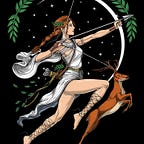Redefining Design Strategy: Solve for the Present, Design for the Future
How SAP Design’s Strategic Foresight discipline is using foresight, strategy, and design to build the enterprise tools of tomorrow
One of the key goals for Design at SAP is to figure out how we can build products that people love now — and will continue to love well into the future. User research and design-led development are crucial pieces to this puzzle. To design for the future, we need to employ tools from the strategy and foresight disciplines. Design and foresight are intrinsically connected; designers have always had to look beyond the present to understand how things can be better. Likewise, strategy and design have also proved to be an important combination to create experiences and solutions that go beyond fleeting trends to make a lasting impact. This is where our Strategic Foresight team thrives. We are a collection of tastemakers, trendsetters, strategic thinkers, hole-pokers, and game-changers ready to define the future.
Embracing dichotomies
Some may argue that trying to predict the future is a fool’s errand. We are always working against our own biases and myopia when it comes to designing for the future. Our challenge is to embrace the contradictions and ambiguity that come along with this field and apply as much rigor as we can to our research and analysis processes. Of course, there are always other challenges to contend with, namely time and resources. The pressures and constraints are many: We need to move fast yet be thorough; we need to innovate yet empathize; we need to be strategic yet take risks; we need to plan for the next 50 years while solving current problems. The dichotomies are endless, but they serve as our main source of friction and inspiration in striving for excellence.
Defining our process
The process helps us apply rigor to this complex discipline, and we continue to refine and optimize as we go. Here are the steps we’ve defined thus far as a part of our Strategic Foresight discipline:
- Understand the user. To ensure we’re checking our biases and assumptions, we emphasize that we’re not designing for ourselves — or even our future selves, but rather for a group of people that we may not yet understand.
- Frame the domain. Identify the focus area to reach alignment with the business strategy and mission of the organization.
- Scan for trends. Look at the current landscape to identify the potential societal, economic, environmental, political, and technological impacts.
- Forecasting. It is only after these steps that we might begin concepting scenarios and potential future solutions.
- Envision the future. Using data analysis, paint a picture for key stakeholders of how these ideas will connect to the organization. This is key to unlocking support and gaining as much trust and confidence before we pour money, time, energy, and trust into a build.
- Strategic planning. Allows us to backcast, connecting the dots between where the organization is now, where it needs to go, and how we get there.
- Implementation. It may be far from the final step, but perhaps the climax of the story. How will this work be evaluated? How long will it take to release? How will we navigate the hiccups? What does success look like? Implementation is the test/learn cycle.
What have we learned so far?
While Design and foresight are cyclical and iterative by nature, we have spent a great deal of time diligently framing the domain and scanning for trends to start concepting possible future scenarios. We then met with stakeholders, did extensive desk research, interviewed rounds of customers and end users, and conducted 6 weeks of workshops. Some initial learnings about what’s in store for the future of work, especially when it comes to the role of enterprise software:
Streamline the Future: Users are looking for more straightforward software processes with easier access to tools and a more convenient user flow. Since many folks are working in remote or hybrid environments in this post-COVID era, it’s also important for a more simplified hardware setup to be available (i.e., one that does not require 3 large monitors) to be able to easily work in different places.
Efficiency and Economy: Automated tools that can take on the most repetitive tasks will become increasingly important in alleviating daily workloads for users. Many workers are gauged by their speed, accuracy, and completion of jobs. A tool that can boost productivity inherently, without putting more stress and weight on the user will be very important. Users also unanimously feel that the communication overload brought on by multiple tools, languages, cultures, time zones, locations, and working styles could be economized to bring more efficiency and flow.
Impact is Opaque: Due to the lack of transparency around current AI applications, users are often unable to envision the potential that AI can provide for the future. Many are concerned about how emerging technology might negatively affect our social and economic fabric. Exposing the integration and providing clarity around the presence of AI might help to lessen the fear of the unknown and ultimately increase the desired adoption of AI-powered tools.
As a Strategic Foresight team, we are learning how to intelligently design for the future through our research, evaluations, data analysis, and processes. Our partnerships both internally and with our customers and users have proven to be incredibly valuable in pointing us in the right direction. We hope to continue involving thoughtful makers and our incredible open-minded leaders in order to learn through our customers and end users and build products they will love today and tomorrow.
Experience matters. Follow our journey as we transform the way we build products for enterprise on www.sap.com/design.
